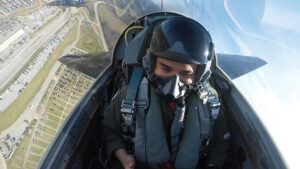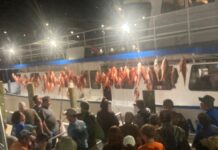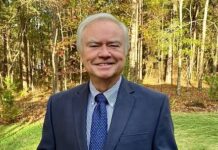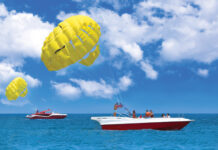By Joanne MacPhee
 Ever since he was a young boy, J.R. Figueroa has been fascinated by military aircraft; he played with them, he studied them and hoped that one day he would get to fly them. His Uncle would take him to airshows in Arizona and together they would make frequent visits to the Yuma Aircraft Museum. Then as an impressionable seven-year-old he watched, like millions around the world as Top Gun burst onto our movie screens. All these childhood memories left an indelible mark on the man he would become.
Ever since he was a young boy, J.R. Figueroa has been fascinated by military aircraft; he played with them, he studied them and hoped that one day he would get to fly them. His Uncle would take him to airshows in Arizona and together they would make frequent visits to the Yuma Aircraft Museum. Then as an impressionable seven-year-old he watched, like millions around the world as Top Gun burst onto our movie screens. All these childhood memories left an indelible mark on the man he would become.
Today, Lieutenant Colonel J. R. Figueroa is a member of the 301st Fighter Squadron at Eglin Airforce Base, flying B38 fighter jets in adversarial, simulated combat against fellow F22 fighter pilots.
Born in Puerto Rico Lt. Col Figueroa was already a member of the Island’s Civil Airport National Guard and ROTC when he joined the U.S. Air Force to study at Embry-Riddle University in Daytona Beach, Fl. Figueroa graduated as a Lieutenant, with a degree in aerospace engineering.
Three years into his military career Figueroa was selected for pilot training and was sent to Columbus AFB for F15 flight training. Like many, Lt. Col. Figueroa has moved from base to base over the years including a four-year commission at Lakenheath AFB in England, where he flew tactical, Alert Force missions over UN territories.
It was while stationed at Lakenheath that the Lt. Col. had the privilege to participate in a ‘Missing Man Formation’ as part of a Memorial Service in Normandy, France. The Missing Man formation is a ceremonial aerial salute, composed of two pairs of aircraft. The aircraft fly in a V-shape with the flight leader at the point and their wingman on their left. The second element leader and his wingman fly to their right. The formation flies over the ceremony low enough to be clearly seen and the second element leader abruptly pulls up out of the formation (in this instance Figueroa), while the rest of the formation continues in level flight until all aircraft are out of sight.
A married father of three, Figueroa is well aware of the risks he and his fellow pilots face each day when airborne, but there is confidence in knowing that every mission is meticulously planned down to the smallest detail. “What many people do not know, is the hours, upon hours that go into preparing for a simulated-combat flight” said Figueroa. “An actual exercise might only last an hour to one point three hours in the air, but as pilots we spend hours in briefing sessions before each flight and many more hours after the exercise, analyzing every aspect of the maneuver to see what we did right, what we did wrong and what we can do better. We all realize that one day this may not be a simulation and lives will depend on how well we trained in advance for the mission.” Figueroa admitting that much as there is definitely a rush and a sense of fun and excitement to every flight, there is also danger and the privilege of being able to fly should not be taken lightly.
Before their posting to Eglin following Hurricane Michael, the 301st Fighter Squadron was stationed at Tyndall AFB, and as Figueroa explains the Gulf Coast Airspace is particularly conducive to flight training because of its topology and minimal commercial air traffic.
We are lucky to live among them, so the next time you hear that unmistakable roar, look up as they fly by you at mach speed and stop to consider the men and women above, risking it all for our freedom.

















































